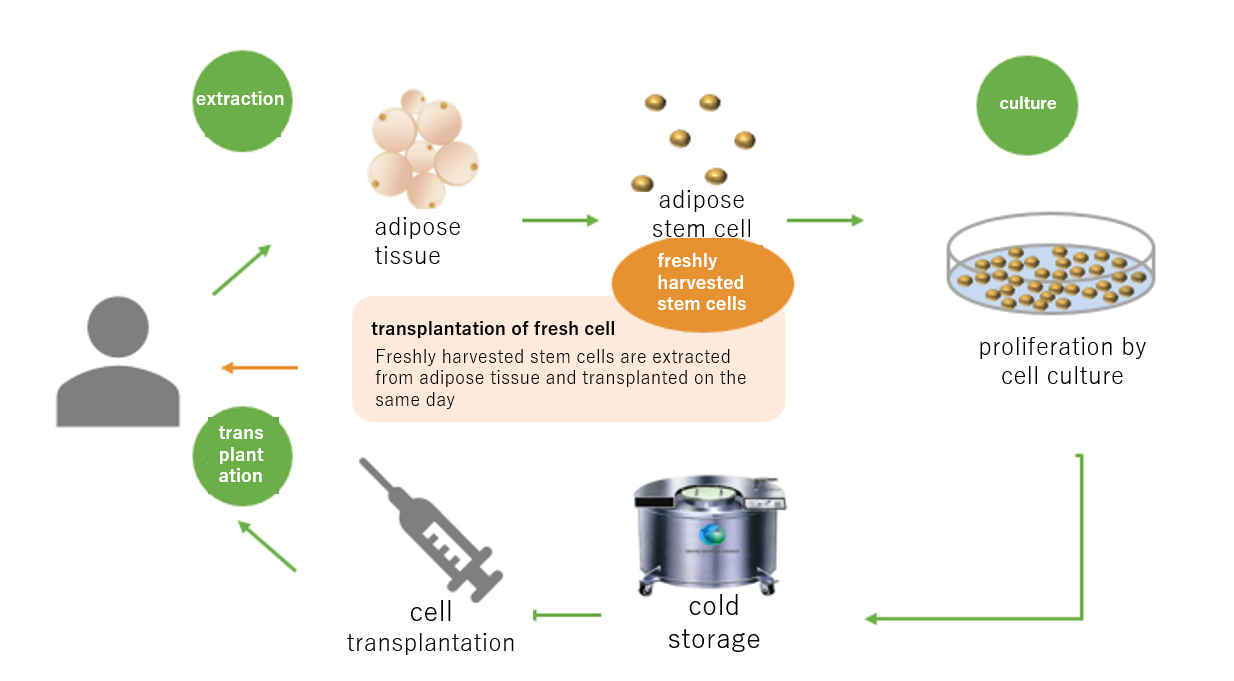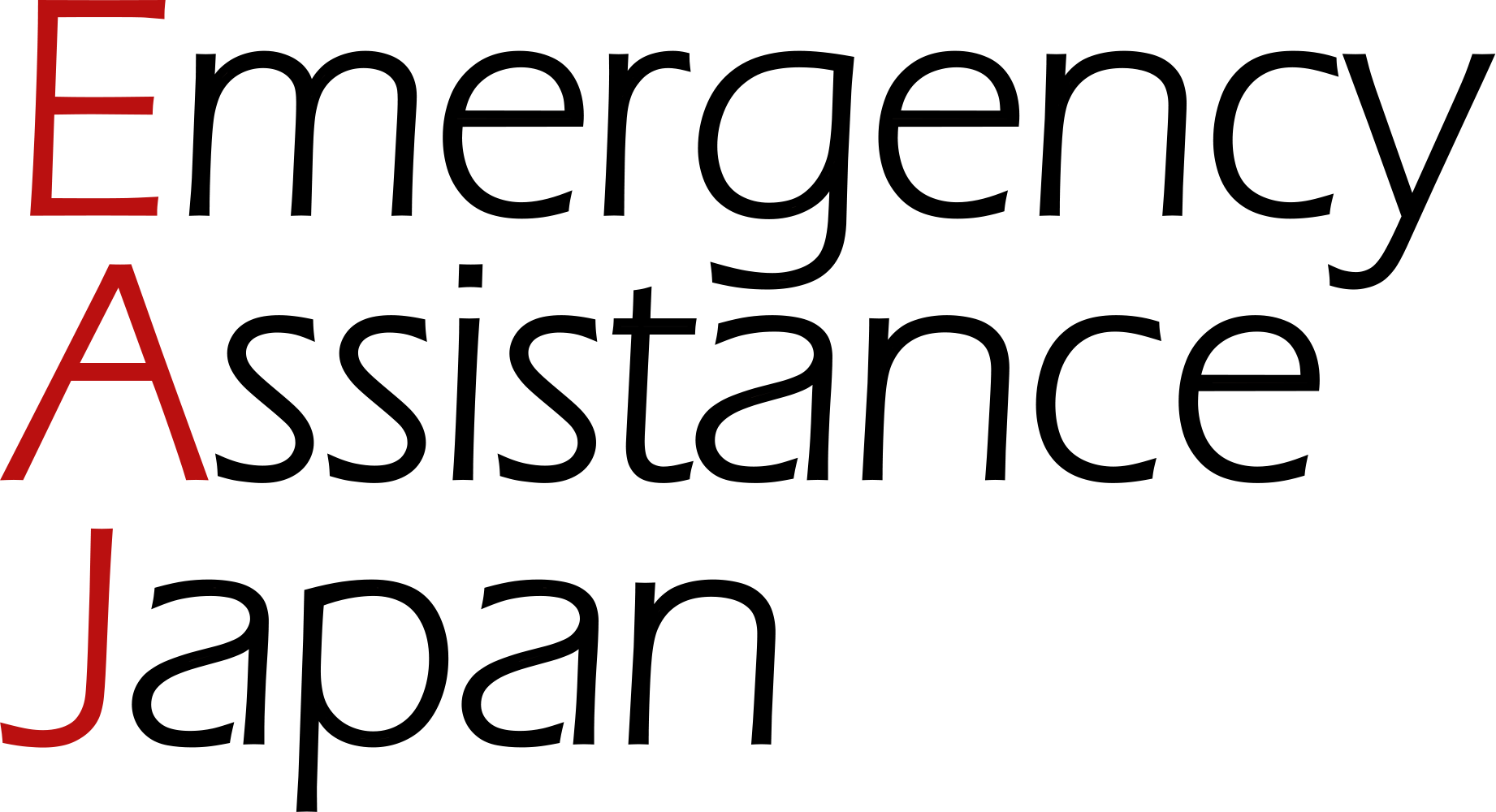Bone and muscle(Osteoarthritis)
- HOME
- Other than cancer(Whole Body, Others)
- Bone and muscle(Osteoarthritis)
- Treating Osteoarthritis with Adipose Tissue-derived Stem Cells
Treating Osteoarthritis with Adipose Tissue-derived Stem Cells
23.10.01
When organs or tissues in the body have lost their functions due to injury or disease, a treatment called regenerative medicine is applied to regenerate the lost functions by transplanting cells or tissues from the patient’s own body or from other people. “Stem cells” play an essential and most important role in the process of cell and tissue regeneration. Since stem cells can infinitely proliferate themselves and transform into various types of cells, it is expected that this characteristic can be utilized to bring out the body’s self-renewal ability and restore organ functions.
Regenerative medicine in Japan is led by the government and its safety is guaranteed:
While various studies of regenerative medicine are being conducted around the world, Japanese researchers are also conducting many world-class basic and clinical studies. In Japan, the national government has taken the lead in ensuring safety and enhancing the regenerative medicine system by establishing laws pertaining to regenerative medicine. The Ministry of Health, Labor, and Welfare (MHLW) examines and accepts the reports on regenerative medicine plans submitted by medical institutions before starting treatment at medical institutions in Japan, so the safety of regenerative medicine is relatively assured compared to other countries where safety standards are vague.
What are adipose stem cells?:
Among such regenerative therapies, the use of “adipose tissue-derived stem cells” (“adipose stem cells”), which are found in subcutaneous fat, is attracting attention because they are numerous and easy to extract. By injecting adipose stem cells from the patient’s own body into the joint, it is expected to suppress joint inflammation, promote repair and regeneration of wounded areas, and inhibit degeneration of articular cartilage, thereby prolonging the life of the joint. Because this treatment method uses the patient’s own adipose stem cells, it is highly safe and has a low risk of side effects and complications, such as those seen with steroid administration.
World’s first hybrid stem cell therapy and regenerative medicine specializing in golfers.:
The clinics referred by EAJ offer distinctive treatments. For example, the world’s first hybrid adipose stem cell therapy (fresh cells + cultured cells). Adipose stem cell therapy usually begins with a first visit to the clinic to collect fat for culture, and a second visit to the clinic to transplant the cultured cells (start of treatment). The world’s first hybrid treatment method, developed by the director of this clinic, is characterized by its quicker realization of effects, as non-cultured fresh cells are transplanted at the first visit and then cultured cells are transplanted at the second and subsequent visits. On the other hand, we can refer you to clinics that specialize in regenerative medicine for golfers. This clinic provides treatment to relieve the pain of professional golfers who compete at the forefront of the men’s tours in Japan. The clinic suggests a combination of rehabilitation and treatment to alleviate pain such as Medial Epicondylitis(Golfer’s Elbow)and treatment for osteoarthritis of the knee, which are common problems for golf players.
Treatment methods:
Concept of World’s first “Hybrid Therapy”

If you have any of these symptoms, please contact us:
Those who have pain in joints such as knees, shoulders, and elbows; those who want to improve sports-specific symptoms such as Lateral Epicondylitis(Tennis Elbow)and Medial Epicondylitis(Golfer’s Elbow) ; those who are looking for non-surgical treatment for artificial joints; and those who are looking for fat stem cell therapy combined with rehabilitation.
Safety of treatment and clinic:
At clinics referred by EAJ, an orthopedic surgeon will diagnose and treat. It is safe as the orthopedic surgeon also harvests adipose tissue incising a few centimeters. Cell purification, culture, storage, etc. are handled by staff with expertise in cell culture at the Cell Processing Center located in the clinic or at a contracted facility. All of these facilities are operated under thorough management in Japan, enabling patients to receive treatment in a safe and secure environment.
